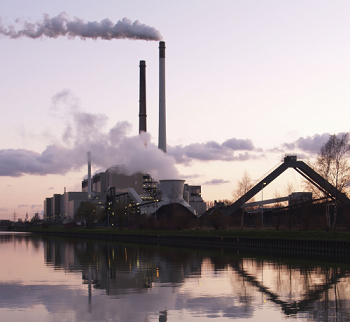Global CO2 Emissions Reach Record-High, Driven by Fossil Fuel Use in Rapidly Industrializing Nations
 Global carbon dioxide (CO2) emissions continue to rise despite best efforts to date to curtail them. CO2 emissions reached a record-high 31.6 gigatonnes (Gt) in 2011, according to preliminary estimates from the International Energy Agency, a 1 Gt, 3.2% year-over-year increase.
Global carbon dioxide (CO2) emissions continue to rise despite best efforts to date to curtail them. CO2 emissions reached a record-high 31.6 gigatonnes (Gt) in 2011, according to preliminary estimates from the International Energy Agency, a 1 Gt, 3.2% year-over-year increase.Increasing fossil fuel use, driven primarily by growing demand in rapidly industrializing countries such as China and India is fueling the rise. Coal accounted for 45% of total energy-related CO2 emissions worldwide last year, followed by oil at 35% and natural gas accounting for 20%, the IEA reported.
CO2 Emissions: Reaching a Tipping Point
At 31.6 Gt per year and rising, global CO2 emissions are just 1% below and fast approaching the 2017 32.6 Gt level the IEA has determined is consistent with a 50% chance of limiting an average global temperature increase to 2°C. That, according to climate scientists’ best estimates, is a critical level marking a climate change tipping point.
The IEA World Energy Outlook 2011’s 450 Scenario notes that a decoupling of CO2 emissions and global GDP growth is taking place. Nonetheless, the trend is discouraging, with the rate of growth of CO2 emissions exceeding that of GDP in 2011.
More needs to be done and done faster if humanity is to avoid a worst-case climate change scenario, according to the IEA, which, along with a renewed push by environmental organizations and public interest groups is calling on the public to pressure their governments to eliminate fossil fuel subsidies.
CO2 emissions in industrialized OECD countries decreased by 0.6% in 2011, but that wasn’t nearly enough to offset the 6.1% increase in other countries. China contributed the most to 2011′s rise in CO2 emissions, which increased 720 million metric tons (Mt), or 9.3%. A higher rate of coal consumption was the primary culprit.
China, India Move Up the Ranks of World’s Largest CO2 Emitters
The IEA’s chief economist tried to focus on the positive when assessing China’s CO2 emissions. “What China has done over such a short period of time to improve energy efficiency and deploy clean energy is already paying major dividends to the global environment,” commented IEA chief economist Dr. Faith Birol. “China’s carbon intensity — the amount of CO2 emitted per unit of GDP — fell by 15% between 2005 and 2011. Had these gains not been made, China’s CO2 emissions in 2011 would have been higher by 1.5 Gt.”
India’s now climbing rapidly up the ranks of the world’s largest CO2 emitters. India’s CO2 emissions rose by 140 million metric tons, or 8.7%, surpassing Russia as the world’s fourth largest emitter of CO2, behind China, the U.S., and the E.U.
On a per capita basis CO2 emissions in China and India still average just 63% and 15% of their OECD counterparts, however, the IEA notes.
U.S. 2011 CO2 emissions decreased 92 million metric tons, or 1.7%, primarily due to electric utilities’ ongoing switch from coal to natural gas-powered generation. An exceptionally mild winter also contributed to the decline.
Looking out over the longer term, U.S. CO2 emissions have fallen by 430 Mt, or 1.7%, since 2006, the largest reduction of all countries or regions. Lower oil use in transportation and the economic downturn also contributed significantly to the decline, with stricter fuel efficiency standards, efficiency improvements and less driving as measured by vehicle miles traveled.
European Union (E.U.) CO2 emissions also decreased in 2011. They dropped 92 Mt, or 1.9%, as the onset of recession reduced industrial production. An unusually warm winter also contributed to the decrease, reducing space heating needs.
With its nuclear energy infrastructure battered and now shuttered, Japan’s CO2 emissions increased by 28 Mt, or 2.4%, as fossil fuel use has increased in the wake of the Fukushima disaster.
You can return to the main Market News page, or press the Back button on your browser.

